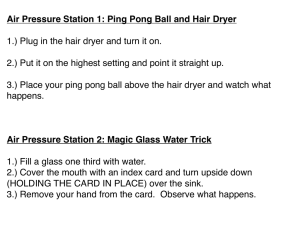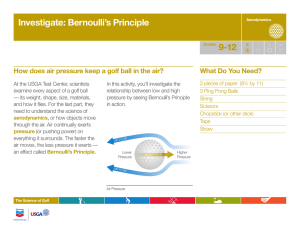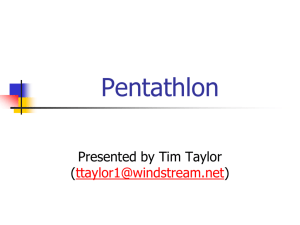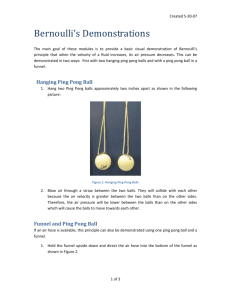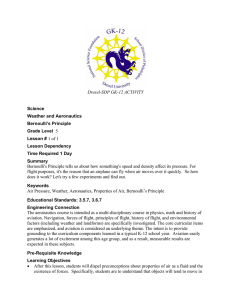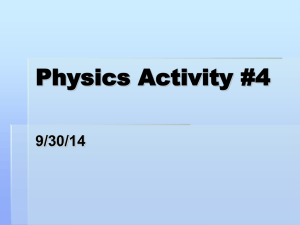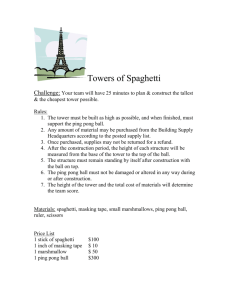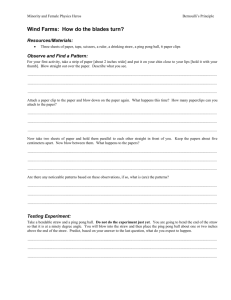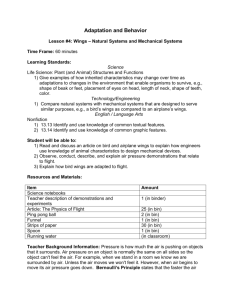Bernoulli's Principle and the Coanda Effect
advertisement
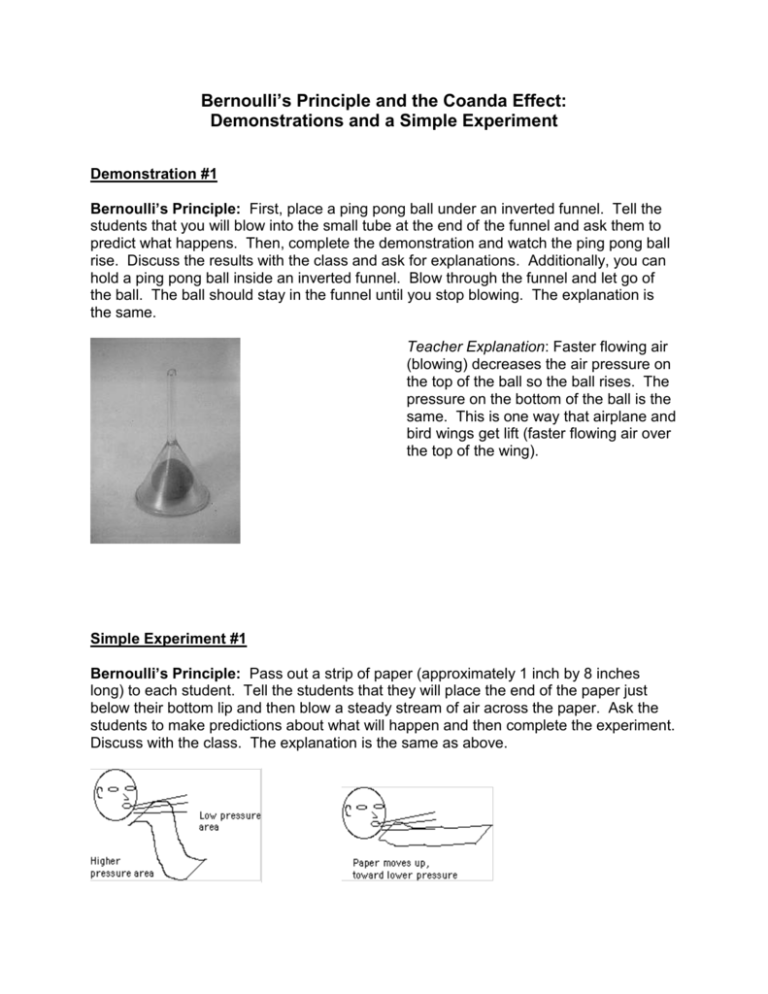
Bernoulli’s Principle and the Coanda Effect: Demonstrations and a Simple Experiment Demonstration #1 Bernoulli’s Principle: First, place a ping pong ball under an inverted funnel. Tell the students that you will blow into the small tube at the end of the funnel and ask them to predict what happens. Then, complete the demonstration and watch the ping pong ball rise. Discuss the results with the class and ask for explanations. Additionally, you can hold a ping pong ball inside an inverted funnel. Blow through the funnel and let go of the ball. The ball should stay in the funnel until you stop blowing. The explanation is the same. Teacher Explanation: Faster flowing air (blowing) decreases the air pressure on the top of the ball so the ball rises. The pressure on the bottom of the ball is the same. This is one way that airplane and bird wings get lift (faster flowing air over the top of the wing). Simple Experiment #1 Bernoulli’s Principle: Pass out a strip of paper (approximately 1 inch by 8 inches long) to each student. Tell the students that they will place the end of the paper just below their bottom lip and then blow a steady stream of air across the paper. Ask the students to make predictions about what will happen and then complete the experiment. Discuss with the class. The explanation is the same as above. Demonstration #2 Coanda effect: Arrange the class around the sink in the classroom and get the metal spoon out. Ask students which direction the water will go after it flows over the curved back of the spoon. Do the demonstration and lead a classing discussion relating this to the Coanda effect. Teacher Explanation: In this case, liquids and gases both have this property. Basically, a stream of liquid or gas will stay attached to a curved surface, rather than continue in a straight line. Wings direct air down. Then, this air meets with pressure from the air below it, creating lift.
